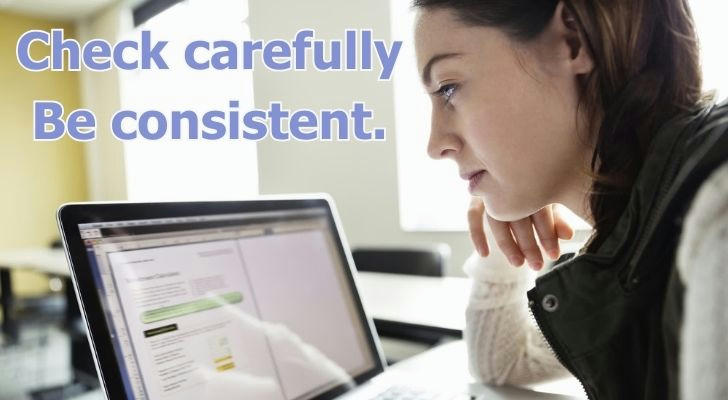10 Mistakes to Avoid in Your Job Application — And How to Get It Right
When applying for a job, your resume and cover letter are important — but they’re not always enough. Many employers also ask candidates to fill out a job application form, and how you handle this step can make or break your chances. Don’t treat it as just another formality; it’s a key part of the hiring process that shapes how the recruiter views you
A well-filled job application does more than just repeat your resume — it shows you understand the company’s needs and that you’re a perfect match for the role. But a careless application can send up red flags and get your name removed from the shortlist.

So how do you avoid common pitfalls and make sure your job application stands out? Let’s take a closer look at 10 mistakes to avoid — with real-world examples — so you can submit an application that boosts your chances of getting hired.
1. Inconsistent Information
What to avoid:
If the job titles, company names, or employment dates on your job application don’t match your resume or cover letter, it raises immediate doubts. Employers want to see a clear and consistent work history.
Real-world example:
Imagine an employer sees that your resume says you worked at "GreenTech Solutions" from 2018 to 2022, but your application says 2019 to 2021. This inconsistency could make them wonder if you’re being careless — or worse, dishonest.
How to fix it:
Double-check all dates, job titles, and company names to ensure they align across all documents.

2. Leaving Blank Sections
What to avoid:
Skipping parts of the application form, even if they seem repetitive or irrelevant, makes you look uninterested or careless.
Real-world example:
A hiring manager for a marketing firm once shared that an applicant left the “Skills” section blank, even though it was crucial for understanding their expertise. The application was rejected because it lacked important details.
How to fix it:
Complete every section of the application, even if you’re repeating information from your resume. You can always expand on points or add extra context.
3. Irrelevant or Poorly Described Experience
What to avoid:
Listing jobs or skills that have no connection to the role you’re applying for wastes space and distracts from your qualifications.
Real-world example:
An applicant for a project manager role detailed their experience as a barista but failed to highlight their leadership or organizational skills from that job. The hiring manager couldn’t see the connection to the role.
How to fix it:
Tailor your application to the job description. Focus on relevant experiences and show how your past roles prepared you for this opportunity.
4. Overly Lengthy Job Descriptions
What to avoid:
Going into excessive detail about every past role can overwhelm recruiters and make it harder for them to spot your key qualifications.
Real-world example:
A candidate applied for a sales position and provided five paragraphs describing their first job as a cashier. The hiring manager stopped reading before reaching their more relevant experience.
How to fix it:
Keep job descriptions concise and focused on achievements and relevant skills. Use bullet points to make information easier to scan.
5. Including False or Exaggerated Information
What to avoid:
It’s tempting to inflate your experience or qualifications, but dishonesty almost always backfires.
Real-world example:
One applicant claimed proficiency in advanced Excel functions but couldn’t complete a basic spreadsheet task during their interview. They didn’t get the job — and harmed their reputation.
How to fix it:
Be honest about your skills and experience. If you’re lacking in a particular area, highlight your willingness and ability to learn.

6. Unrealistic Salary Expectations
What to avoid:
Asking for a salary far above or below industry standards can make you seem uninformed or unprepared.
Real-world example:
An applicant requested a starting salary 50% higher than the market rate for their experience level. The employer didn’t even call them back.
How to fix it:
Research salary ranges for the role and your location. Websites like Glassdoor and Payscale can help you find realistic figures.
7. Unprofessional Contact Information
What to avoid:
An email address like "[email protected]" doesn’t exactly scream “professional.”
Real-world example:
A hiring manager admitted they’ve rejected otherwise strong applications because of unprofessional email addresses. It created a poor first impression.
How to fix it:
Use a simple, professional email address — ideally your first and last name (e.g., [email protected]).
8. Spelling and Grammar Mistakes
What to avoid:
Typos and grammatical errors make your application look rushed and sloppy.
Real-world example:
A finance candidate listed their “attention to detial” as a strength. The irony wasn’t lost on the hiring team, and their application was rejected.
How to fix it:
Proofread your application multiple times. Use tools like Grammarly to catch mistakes.
9. Attaching Unnecessary Photos
What to avoid:
Unless you’re applying for a modeling or acting gig, employers usually don’t need your photo.
Real-world example:
An applicant attached a selfie to their application for an administrative role. It made them seem unprofessional and unaware of standard practices.
How to fix it:
Only include photos if the job description specifically requests them.
10. Being Negative About Past Employers
What to avoid:
Criticizing a former boss or company can make you seem difficult or unprofessional.
Real-world example:
One candidate listed “toxic management” as their reason for leaving their last job. The hiring manager worried they might bring negativity into the new team.
How to fix it:
Frame career moves positively — focus on seeking new challenges and growth opportunities.

Final Thoughts: Stand Out for the Right Reasons
Avoiding these common mistakes helps your job application reflect your professionalism, attention to detail, and genuine interest in the role. Remember, your application is your first impression — make it count.
And if you’re not sure where to start, consider taking the MBTI personality test to better understand your strengths and find roles that align with them.
Good luck — you’ve got this!
